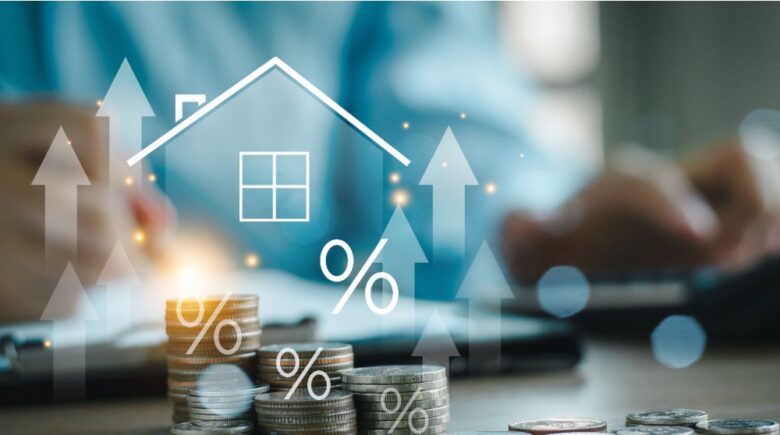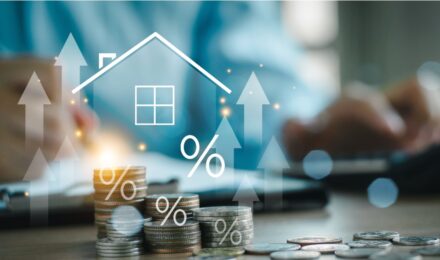In late August 2025, mortgage interest rates in the United States began to edge downward amid growing expectations of a potential cut in the federal funds rate. According to data from Zillow, the average rate on a 30-year fixed mortgage dropped to 6.41% for home purchases and 6.5% for refinancing. Although analysts widely anticipated two rate cuts from the Federal Reserve before year’s end, few expected mortgage rates to fall below 6%. As a result, hopes for a housing boom remained muted.
While any decline in mortgage rates is generally welcomed, the 2025 housing market remained dominated by affordability challenges and political pressures. Many analysts described a persistent “lock-in effect,” where homeowners were reluctant to sell their properties. This hesitation was primarily linked to interest rates: countless homeowners still held mortgages secured during the COVID-19 pandemic, when rates hit record lows.
Most Americans who sell their homes pay off their existing mortgage at closing, then take out a new loan for their next purchase. This process typically fuels the cyclical nature of the housing market, which thrives when the Fed maintains low rates. It’s easy to understand why a homeowner with a 2.65% fixed-rate mortgage from early 2021 would be unwilling to exchange it for a 6.4% rate on a new loan.
How Mortgage Rates Shape the Housing Market
Mortgage interest rates play a decisive role in determining the behavior of both buyers and sellers. For prospective homeowners, these rates directly influence purchasing power—a lower rate can make a more expensive property affordable, while a higher rate can quickly price buyers out.
A mere 1% increase in mortgage rates can add hundreds of dollars to a monthly payment, often marking the difference between approval and disqualification. Although the Federal Reserve does not directly set mortgage rates, its policies strongly influence how lenders assess the broader economy. Banks adjust mortgage rates based on the federal funds rate and the yield on the 10-year U.S. Treasury note, which serves as a key benchmark for long-term borrowing.
While short-term loans respond more directly to the Fed’s moves, the 30-year fixed-rate mortgage tends to follow trends in Treasury yields.
As of September 2025, Zillow placed the average U.S. home value at $368,581—a figure far beyond what most households can pay in cash. This underscores the critical role of mortgage financing in sustaining the housing market.
The Reality of Housing Affordability in 2025
Rising mortgage rates have intensified America’s ongoing affordability crisis, which has persisted since the end of the pandemic. The issue extends beyond home prices and borrowing costs—it’s also tied to inflation, stagnant wages, and higher living expenses.
According to the National Association of Home Builders (NAHB), more than 70% of Americans could not afford a median-priced home in 2025. This staggering figure highlights how millions of would-be buyers remain trapped in the rental market.
Home affordability, as defined by federal regulations from the Consumer Financial Protection Bureau (CFPB), depends on several key factors:
- Income and employment status
- Monthly mortgage payments
- Taxes, insurance, and maintenance costs
- Household expenses and existing debt
- Debt-to-income (DTI) ratio
- Credit history
Among these, DTI ratios are often considered the most telling indicator of affordability. Mortgage lenders generally favor ratios of 36% or lower, indicating a healthy balance between income and debt. While some loans may allow DTIs up to 50%, such scenarios are increasingly rare given inflation and the high cost of living.
The Rent vs. Buy Dilemma
Periods of high interest rates often reignite the debate between renting and buying. Home ownership has long been viewed as a cornerstone of the American Dream, but in 2025, that ideal is under pressure.
Skyrocketing prices and elevated mortgage rates have made it difficult for many families to justify buying. For instance, a family paying $2,500 per month in rent in Miami might face $4,000 in mortgage payments for a comparable home.
Still, optimism persists. With expectations of declining rates through 2025 and into 2026, buying could soon become more appealing. A fixed-rate mortgage not only provides stability but also allows homeowners to build equity—a form of long-term wealth that renting cannot offer. Moreover, when property values appreciate over time, homeowners benefit from both equity growth and potential capital gains.
While short-term fluctuations always carry risk, the historical trend of real estate appreciation suggests that home ownership remains one of the most reliable tools for building future wealth.
In late August 2025, mortgage interest rates in the United States began to edge downward amid growing expectations of a potential cut in the federal funds rate. According to data from Zillow, the average rate on a 30-year fixed mortgage dropped to 6.41% for home purchases and 6.5% for refinancing. Although analysts widely anticipated two rate cuts from the Federal Reserve before year’s end, few expected mortgage rates to fall below 6%. As a result, hopes for a housing boom remained muted.
While any decline in mortgage rates is generally welcomed, the 2025 housing market remained dominated by affordability challenges and political pressures. Many analysts described a persistent “lock-in effect,” where homeowners were reluctant to sell their properties. This hesitation was primarily linked to interest rates: countless homeowners still held mortgages secured during the COVID-19 pandemic, when rates hit record lows.
Most Americans who sell their homes pay off their existing mortgage at closing, then take out a new loan for their next purchase. This process typically fuels the cyclical nature of the housing market, which thrives when the Fed maintains low rates. It’s easy to understand why a homeowner with a 2.65% fixed-rate mortgage from early 2021 would be unwilling to exchange it for a 6.4% rate on a new loan.
How Mortgage Rates Shape the Housing Market
Mortgage interest rates play a decisive role in determining the behavior of both buyers and sellers. For prospective homeowners, these rates directly influence purchasing power—a lower rate can make a more expensive property affordable, while a higher rate can quickly price buyers out.
A mere 1% increase in mortgage rates can add hundreds of dollars to a monthly payment, often marking the difference between approval and disqualification. Although the Federal Reserve does not directly set mortgage rates, its policies strongly influence how lenders assess the broader economy. Banks adjust mortgage rates based on the federal funds rate and the yield on the 10-year U.S. Treasury note, which serves as a key benchmark for long-term borrowing.
While short-term loans respond more directly to the Fed’s moves, the 30-year fixed-rate mortgage tends to follow trends in Treasury yields.
As of September 2025, Zillow placed the average U.S. home value at $368,581—a figure far beyond what most households can pay in cash. This underscores the critical role of mortgage financing in sustaining the housing market.
The Reality of Housing Affordability in 2025
Rising mortgage rates have intensified America’s ongoing affordability crisis, which has persisted since the end of the pandemic. The issue extends beyond home prices and borrowing costs—it’s also tied to inflation, stagnant wages, and higher living expenses.
According to the National Association of Home Builders (NAHB), more than 70% of Americans could not afford a median-priced home in 2025. This staggering figure highlights how millions of would-be buyers remain trapped in the rental market.
Home affordability, as defined by federal regulations from the Consumer Financial Protection Bureau (CFPB), depends on several key factors:
- Income and employment status
- Monthly mortgage payments
- Taxes, insurance, and maintenance costs
- Household expenses and existing debt
- Debt-to-income (DTI) ratio
- Credit history
Among these, DTI ratios are often considered the most telling indicator of affordability. Mortgage lenders generally favor ratios of 36% or lower, indicating a healthy balance between income and debt. While some loans may allow DTIs up to 50%, such scenarios are increasingly rare given inflation and the high cost of living.
The Rent vs. Buy Dilemma
Periods of high interest rates often reignite the debate between renting and buying. Home ownership has long been viewed as a cornerstone of the American Dream, but in 2025, that ideal is under pressure.
Skyrocketing prices and elevated mortgage rates have made it difficult for many families to justify buying. For instance, a family paying $2,500 per month in rent in Miami might face $4,000 in mortgage payments for a comparable home.
Still, optimism persists. With expectations of declining rates through 2025 and into 2026, buying could soon become more appealing. A fixed-rate mortgage not only provides stability but also allows homeowners to build equity—a form of long-term wealth that renting cannot offer. Moreover, when property values appreciate over time, homeowners benefit from both equity growth and potential capital gains.
While short-term fluctuations always carry risk, the historical trend of real estate appreciation suggests that home ownership remains one of the most reliable tools for building future wealth.



